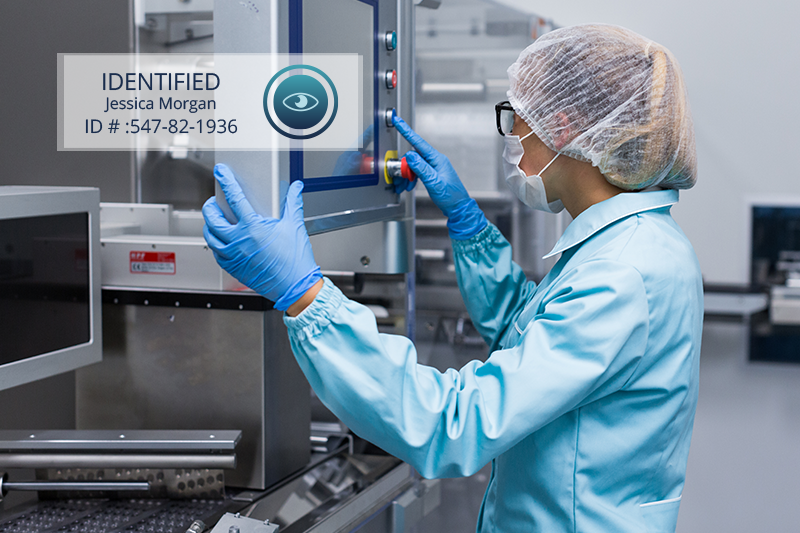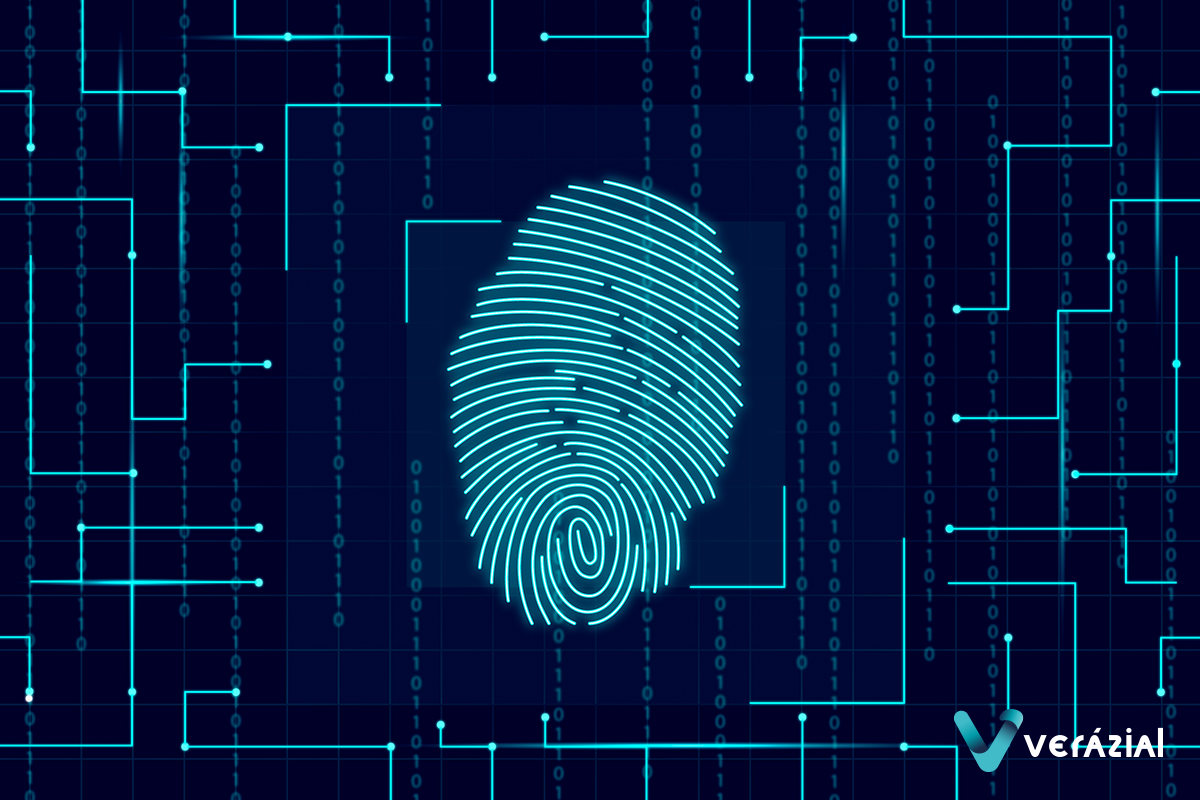How does Biometric Electronic Signature contribute to Sustainability in the Pharmaceutical Industry?
The digitalization of key processes in the pharmaceutical industry is paving the way for more sustainable operations, aligning with ESG (Environmental, Social, and Governance) criteria. Biometric electronic signatures replace paper forms, enhance traceability, and ensure secure identification of personnel. This aligns with Pharma 4.0 principles and strengthens regulatory compliance.
In today’s landscape, where sustainability has become a strategic pillar for organizations, it’s crucial to rethink traditional operational processes from an environmental perspective without losing sight of security, traceability, and regulatory compliance.
The pharmaceutical industry, being heavily regulated and highly documented, has a concrete opportunity: digitalizing key processes to reduce paper dependency and align with ESG (Environmental, Social, and Governance) criteria.
These criteria, which are increasingly important in corporate management and non-financial sustainability reporting, are closely linked to the Sustainable Development Goals (SDGs) of the 2030 Agenda. Initiatives such as waste reduction, responsible innovation, and improved health and safety in the workplace are directly aligned with these frameworks—and can be actively driven by digitizing critical processes.
As we’ve discussed in previous articles, pharmaceutical processes under GMP (Good Manufacturing Practices) regulations require documenting and signing each stage of the production process, along with the corresponding identification of the operator. This necessity has led to the intensive use of printed forms, creating not only a heavy administrative burden and high paper consumption but also a series of operational and regulatory risks:
- Manual recording errors
- Loss of forms and, consequently, critical information
- Forgery of signatures or identity theft
- Unauthorized access to sensitive documentation
- Use of outdated form versions
- Difficulties in accurate and efficient auditing
Added to these are the inefficiencies derived from repetitive tasks like manual filling, validation of physical records, or searching for archived documents. Together, these practices not only compromise data integrity and regulatory compliance but also hinder progress toward a more sustainable production model aligned with ESG criteria.
To delve deeper into this topic, we recommend reading the articles:
How Digitalization Drives Sustainability and Regulatory Compliance
Digitalizing processes in the pharmaceutical industry goes far beyond going paperless: it’s about implementing and integrating specialized software (such as MES, LIMS, or ERP systems) that can automate production control, ensure data traceability, and support real-time decision-making.
Within this digital ecosystem, biometric electronic signature emerges as a strategic tool to securely and uniquely identify personnel at each stage of the process—completely replacing physical forms.
This kind of solution enables every action performed by an operator to be securely and individually recorded, in line with ALCOA+ principles (Attributable, Legible, Contemporaneous, Original, Accurate…), ensuring data integrity and meeting the strictest regulatory standards.
To dive deeper into how these principles relate to employee identification, we invite you to read our article: “Employees’ identification in the pharmaceutical industry according ALCOA+”.
By applying biometric technologies such as iris or fingerprint recognition, companies can achieve:
- Reduced paper usage: Biometric electronic signatures eliminate the need for printed forms and physical plant records, making it unnecessary to print batch records or other operational documents. This leads to a direct reduction in paper and office supply consumption, contributing to environmental conservation.
- Immediate Digital Traceability: Every action registered via biometrics is available in real time, uniquely linked to the operator who performed it. This simplifies audits, reinforces regulatory compliance, and eliminates manual tasks previously required for validation and review on paper.
- Access Control without physical credentials: Biometric identification replaces cards, passwords, and physical tokens—reducing the use of plastic materials while enhancing security for critical system access. This boosts operational efficiency as well as commitment to more sustainable practices.
- Lower Resource and Energy Consumption: By eliminating scanning, filing, and physical storage processes, companies reduce the energy, space, and resources needed for traditional document handling. This operational streamlining translates into efficiency, a lower environmental footprint, and cost savings.

Biometrics and Sustainability Within the Pharma 4.0 Framework
Digital transformation in the pharmaceutical industry goes far beyond reducing paper or optimizing operations. It represents a deep evolution of processes, aligned not only with ESG criteria but also with the Pharma 4.0 model, which promotes the integration of advanced digital technologies to optimize production, strengthen traceability, and ensure data integrity.
We invite you to read our article The Role of Biometric Technologies in the Pharma 4.0 Model: Security and Regulatory Compliance for more information.
In this context, the adoption of biometric technologies for personnel identification becomes a key enabler for advancing tangibly across the three pillars of the ESG approach:
Environmental: Significantly reduces paper use and dependence on physical supplies, helping to cut down on waste and the environmental impact of production processes.
Social: Improves working conditions by eliminating repetitive tasks, minimizing human errors, and promoting a culture based on precision, traceability, and individual responsibility.
Governance: Strengthens process integrity through secure, auditable digital records that comply with regulations—ensuring readiness for inspections and audits.
Implementing biometric solutions is not only aligned with the vision of Pharma 4.0—it also reflects a real commitment to a more efficient, sustainable, and future-ready industry.
Discover how our solution, Verázial ID Pharma, can strengthen security and compliance while aligning with ESG and Pharma 4.0 principles.
Contact us for a demo or customized assessment.
Referencias
- Neon Fingerprint Background Concept [Freepik]
How does Biometric Electronic Signature contribute to Sustainability in the Pharmaceutical Industry?
The digitalization of key processes in the pharmaceutical industry is paving the way for more sustainable operations, aligning with ESG (Environmental, Social, and Governance) criteria. Biometric electronic signatures replace paper forms, enhance traceability, and ensure secure identification of personnel. This aligns with Pharma 4.0 principles and strengthens regulatory compliance.
In today’s landscape, where sustainability has become a strategic pillar for organizations, it’s crucial to rethink traditional operational processes from an environmental perspective without losing sight of security, traceability, and regulatory compliance.
The pharmaceutical industry, being heavily regulated and highly documented, has a concrete opportunity: digitalizing key processes to reduce paper dependency and align with ESG (Environmental, Social, and Governance) criteria.
These criteria, which are increasingly important in corporate management and non-financial sustainability reporting, are closely linked to the Sustainable Development Goals (SDGs) of the 2030 Agenda. Initiatives such as waste reduction, responsible innovation, and improved health and safety in the workplace are directly aligned with these frameworks—and can be actively driven by digitizing critical processes.
As we’ve discussed in previous articles, pharmaceutical processes under GMP (Good Manufacturing Practices) regulations require documenting and signing each stage of the production process, along with the corresponding identification of the operator. This necessity has led to the intensive use of printed forms, creating not only a heavy administrative burden and high paper consumption but also a series of operational and regulatory risks:
- Manual recording errors
- Loss of forms and, consequently, critical information
- Forgery of signatures or identity theft
- Unauthorized access to sensitive documentation
- Use of outdated form versions
- Difficulties in accurate and efficient auditing
Added to these are the inefficiencies derived from repetitive tasks like manual filling, validation of physical records, or searching for archived documents. Together, these practices not only compromise data integrity and regulatory compliance but also hinder progress toward a more sustainable production model aligned with ESG criteria.
To delve deeper into this topic, we recommend reading the articles:
How Digitalization Drives Sustainability and Regulatory Compliance
Digitalizing processes in the pharmaceutical industry goes far beyond going paperless: it’s about implementing and integrating specialized software (such as MES, LIMS, or ERP systems) that can automate production control, ensure data traceability, and support real-time decision-making.
Within this digital ecosystem, biometric electronic signature emerges as a strategic tool to securely and uniquely identify personnel at each stage of the process—completely replacing physical forms.
This kind of solution enables every action performed by an operator to be securely and individually recorded, in line with ALCOA+ principles (Attributable, Legible, Contemporaneous, Original, Accurate…), ensuring data integrity and meeting the strictest regulatory standards.
To dive deeper into how these principles relate to employee identification, we invite you to read our article: “Employees’ identification in the pharmaceutical industry according ALCOA+”.
By applying biometric technologies such as iris or fingerprint recognition, companies can achieve:
- Reduced paper usage: Biometric electronic signatures eliminate the need for printed forms and physical plant records, making it unnecessary to print batch records or other operational documents. This leads to a direct reduction in paper and office supply consumption, contributing to environmental conservation.
- Immediate Digital Traceability: Every action registered via biometrics is available in real time, uniquely linked to the operator who performed it. This simplifies audits, reinforces regulatory compliance, and eliminates manual tasks previously required for validation and review on paper.
- Access Control without physical credentials: Biometric identification replaces cards, passwords, and physical tokens—reducing the use of plastic materials while enhancing security for critical system access. This boosts operational efficiency as well as commitment to more sustainable practices.
- Lower Resource and Energy Consumption: By eliminating scanning, filing, and physical storage processes, companies reduce the energy, space, and resources needed for traditional document handling. This operational streamlining translates into efficiency, a lower environmental footprint, and cost savings.

Biometrics and Sustainability Within the Pharma 4.0 Framework
Digital transformation in the pharmaceutical industry goes far beyond reducing paper or optimizing operations. It represents a deep evolution of processes, aligned not only with ESG criteria but also with the Pharma 4.0 model, which promotes the integration of advanced digital technologies to optimize production, strengthen traceability, and ensure data integrity.
We invite you to read our article The Role of Biometric Technologies in the Pharma 4.0 Model: Security and Regulatory Compliance for more information.
In this context, the adoption of biometric technologies for personnel identification becomes a key enabler for advancing tangibly across the three pillars of the ESG approach:
Environmental: Significantly reduces paper use and dependence on physical supplies, helping to cut down on waste and the environmental impact of production processes.
Social: Improves working conditions by eliminating repetitive tasks, minimizing human errors, and promoting a culture based on precision, traceability, and individual responsibility.
Governance: Strengthens process integrity through secure, auditable digital records that comply with regulations—ensuring readiness for inspections and audits.
Implementing biometric solutions is not only aligned with the vision of Pharma 4.0—it also reflects a real commitment to a more efficient, sustainable, and future-ready industry.
Discover how our solution, Verázial ID Pharma, can strengthen security and compliance while aligning with ESG and Pharma 4.0 principles.
Contact us for a demo or customized assessment.
Referencias
- Neon Fingerprint Background Concept [Freepik]
How does Biometric Electronic Signature contribute to Sustainability in the Pharmaceutical Industry?
The digitalization of key processes in the pharmaceutical industry is paving the way for more sustainable operations, aligning with ESG (Environmental, Social, and Governance) criteria. Biometric electronic signatures replace paper forms, enhance traceability, and ensure secure identification of personnel. This aligns with Pharma 4.0 principles and strengthens regulatory compliance.
In today’s landscape, where sustainability has become a strategic pillar for organizations, it’s crucial to rethink traditional operational processes from an environmental perspective without losing sight of security, traceability, and regulatory compliance.
The pharmaceutical industry, being heavily regulated and highly documented, has a concrete opportunity: digitalizing key processes to reduce paper dependency and align with ESG (Environmental, Social, and Governance) criteria.
These criteria, which are increasingly important in corporate management and non-financial sustainability reporting, are closely linked to the Sustainable Development Goals (SDGs) of the 2030 Agenda. Initiatives such as waste reduction, responsible innovation, and improved health and safety in the workplace are directly aligned with these frameworks—and can be actively driven by digitizing critical processes.
As we’ve discussed in previous articles, pharmaceutical processes under GMP (Good Manufacturing Practices) regulations require documenting and signing each stage of the production process, along with the corresponding identification of the operator. This necessity has led to the intensive use of printed forms, creating not only a heavy administrative burden and high paper consumption but also a series of operational and regulatory risks:
- Manual recording errors
- Loss of forms and, consequently, critical information
- Forgery of signatures or identity theft
- Unauthorized access to sensitive documentation
- Use of outdated form versions
- Difficulties in accurate and efficient auditing
Added to these are the inefficiencies derived from repetitive tasks like manual filling, validation of physical records, or searching for archived documents. Together, these practices not only compromise data integrity and regulatory compliance but also hinder progress toward a more sustainable production model aligned with ESG criteria.
To delve deeper into this topic, we recommend reading the articles:
How Digitalization Drives Sustainability and Regulatory Compliance
Digitalizing processes in the pharmaceutical industry goes far beyond going paperless: it’s about implementing and integrating specialized software (such as MES, LIMS, or ERP systems) that can automate production control, ensure data traceability, and support real-time decision-making.
Within this digital ecosystem, biometric electronic signature emerges as a strategic tool to securely and uniquely identify personnel at each stage of the process—completely replacing physical forms.
This kind of solution enables every action performed by an operator to be securely and individually recorded, in line with ALCOA+ principles (Attributable, Legible, Contemporaneous, Original, Accurate…), ensuring data integrity and meeting the strictest regulatory standards.
To dive deeper into how these principles relate to employee identification, we invite you to read our article: “Employees’ identification in the pharmaceutical industry according ALCOA+”.
By applying biometric technologies such as iris or fingerprint recognition, companies can achieve:
- Reduced paper usage: Biometric electronic signatures eliminate the need for printed forms and physical plant records, making it unnecessary to print batch records or other operational documents. This leads to a direct reduction in paper and office supply consumption, contributing to environmental conservation.
- Immediate Digital Traceability: Every action registered via biometrics is available in real time, uniquely linked to the operator who performed it. This simplifies audits, reinforces regulatory compliance, and eliminates manual tasks previously required for validation and review on paper.
- Access Control without physical credentials: Biometric identification replaces cards, passwords, and physical tokens—reducing the use of plastic materials while enhancing security for critical system access. This boosts operational efficiency as well as commitment to more sustainable practices.
- Lower Resource and Energy Consumption: By eliminating scanning, filing, and physical storage processes, companies reduce the energy, space, and resources needed for traditional document handling. This operational streamlining translates into efficiency, a lower environmental footprint, and cost savings.

Biometrics and Sustainability Within the Pharma 4.0 Framework
Digital transformation in the pharmaceutical industry goes far beyond reducing paper or optimizing operations. It represents a deep evolution of processes, aligned not only with ESG criteria but also with the Pharma 4.0 model, which promotes the integration of advanced digital technologies to optimize production, strengthen traceability, and ensure data integrity.
We invite you to read our article The Role of Biometric Technologies in the Pharma 4.0 Model: Security and Regulatory Compliance for more information.
In this context, the adoption of biometric technologies for personnel identification becomes a key enabler for advancing tangibly across the three pillars of the ESG approach:
Environmental: Significantly reduces paper use and dependence on physical supplies, helping to cut down on waste and the environmental impact of production processes.
Social: Improves working conditions by eliminating repetitive tasks, minimizing human errors, and promoting a culture based on precision, traceability, and individual responsibility.
Governance: Strengthens process integrity through secure, auditable digital records that comply with regulations—ensuring readiness for inspections and audits.
Implementing biometric solutions is not only aligned with the vision of Pharma 4.0—it also reflects a real commitment to a more efficient, sustainable, and future-ready industry.
Discover how our solution, Verázial ID Pharma, can strengthen security and compliance while aligning with ESG and Pharma 4.0 principles.
Contact us for a demo or customized assessment.
Referencias
- Neon Fingerprint Background Concept [Freepik]
You May Also Like
You May Also Like





